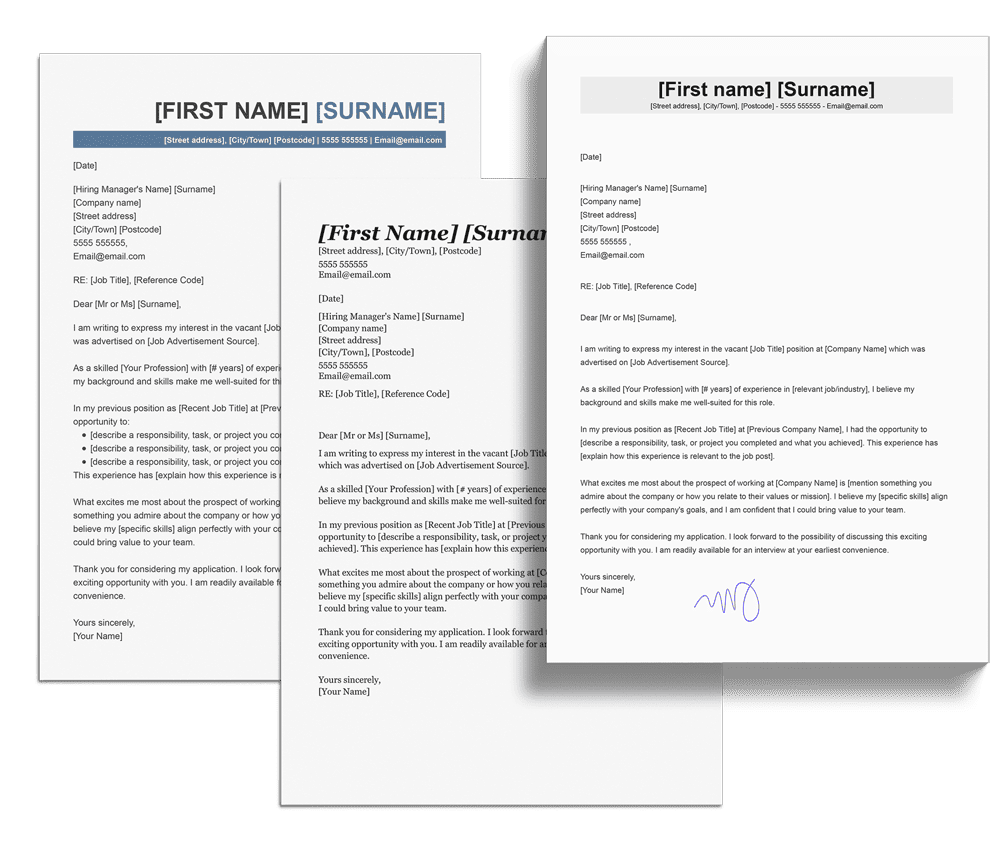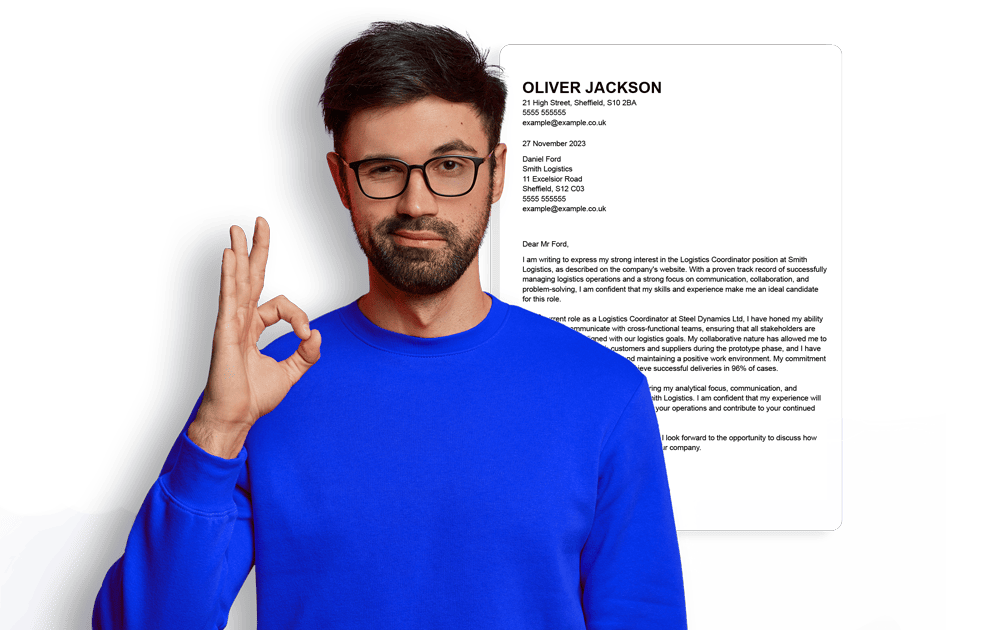Let’s take a closer look at each of the key sections in a cover letter, focusing on how to maximize their potential to capture a recruiter’s attention:
Header
The header is the section where you provide your contact details, ensuring that the hiring manager can reach you with ease. Your details should be at the top, on the right-hand side. Be sure to include your name, full address, phone number, and professional email address. While your physical address isn’t mandatory, it can be useful if the role requires proximity to the workplace.
After your contact details, include the date of your application.
Finally, add any contact information you have for the company on the left-hand side, including the company name and company address.
Opening
Your opening paragraph should be brief and professional. Use a formal salutation, addressing the hiring manager by their name. If you don’t know the hiring manager’s name, use a general greeting like “Dear Sir/Madam” or “Dear Hiring Manager.”
Avoid using generic greetings like “To Whom It May Concern” as they can seem impersonal.
Introduction
In the introduction, briefly introduce yourself and express your enthusiasm for the role you’re applying for. Mention where you found the job listing–be it on a job board, company website, or through a referral. This gives the hiring manager context about your application.
The best cover letters will grab the reader’s attention in the first paragraph to make a great first impression.
Body
The body of your cover letter is your opportunity to showcase why you’re the best fit for the role. A good cover letter addresses one topic per paragraph, each paragraph being made of a few sentences. Give specific examples of your previous work and how your professional skills and experience align with the job description.
Remember to tailor this section to the job you’re applying for; generic cover letters are easy to spot and can make you seem less committed.
Conclusion
In your conclusion, reiterate your interest in the role and the company, explaining why you believe you’re the right fit. You could also state what you hope to bring to the role and how your skills will contribute to the company’s goals.
Finally, encourage the reader to take action via an explicit call to action. Usually, you’ll invite them to get in touch with you to invite you for an interview. You can also encourage them to get in touch with you if they have any questions.
Additionally, if you possess a portfolio of work or a personal website, mention that you have a link to it (or is attached to your application) in this paragraph.
Closing
End your cover letter on a professional note with a formal closing. If you’ve used the person’s name, then sign off with “Yours sincerely,” or if you haven’t, then you can use “Yours faithfully.” Alternatively, you can simply use “Best regards,” followed by your name. Including a digital signature can be a nice touch, but it’s not always necessary.
After the closing, you might want to consider adding a postscript to highlight an important achievement that aligns with the job description.
Should you add a physical signature to your cover letter?
In the digital age, adding a physical signature to your cover letter is not a strict requirement but can be viewed as a personal touch that adds authenticity to your application. If you’re sending a hard copy of your cover letter, signing it by hand can show a level of professionalism and dedication.
However, for electronic applications, a typed name is usually sufficient. If you wish to include a digital signature, ensure it looks professional and fits well within the overall design of your cover letter. Remember, the most important aspect of a cover letter is the content, not the signature.
Pro tip
Your format of cover letter should allow you to draw attention to the best parts of your CV, while providing information about how you can fill the job’s requirements. Your CV will contain facts about your past work experiences, while in your cover letter you can elaborate on your strengths. This is your chance to convince that you are the right person for the job.
Covering letter format examples
Now that you have mastered the fundamentals of properly formatting a cover letter, let’s examine three specific examples that illustrate different scenarios you might encounter when preparing your application.
These examples will provide practical insights into how you can adapt the format of a cover letter to various situations, such as when you have extensive experience, when you’re making a career change, or when you’re a recent graduate entering the job market.


